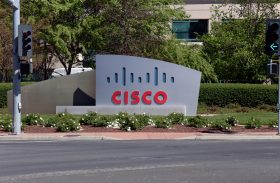ONF Draws New Members With Tech Specs

The Open Networking Foundation (ONF), a consortium dedicated to fostering software-defined network (SDN) interoperability backed primarily by telecommunications carriers, is pushing forward with real-world technical standards that it has used to recruit new members.
ONF this week announced it has formed a Technical Leadership Team (TLT), finalized its initial focus areas on specific Reference Designs (RDs), and added four networking equipment vendors to the top tier of its membership. Those new vendor members include ADTRAN, Dell EMC, Edgecore Networks, and Juniper Networks.
The four areas of focus outlined by the ONF are:
- SDN Enabled Broadband Access (SEBA): A lightweight reference design for SDN Enabled Broadband Access that is a variant of an R-CORD specification that ONF previously defined
- Network Function Virtualization (NFV) Fabric: An SDN-native spine-leaf data center fabric optimized for edge applications
- Unified Programmable & Automated Network (UPAN): An SDN reference design based on the programmable language that promises to accelerate Virtual Network Function (VNF) performance
- Open Disaggregated Transport Network (ODTN): A reference design for promoting multi-vendor optical networks
The ONF has been in place for some time but it's new reference designs are being developed to draw new support, says Robert Conger, CTO for the Americas at ADTRAN.
The original mission of ONF was to promote adoption of OpenFlow, an open source protocol that provides a foundation for building SDNs. Last year ONF merged with Open Networking Lab (On.Lab), a non-profit organization focused on SDN education that was founded by professors from Stanford University. Now that ONF is moving beyond theoretical concepts, the time for networking vendors to participate at a higher level has come, says Conger.
In many cases, ONF will be creating reference designs for technologies such as disaggregated network operating systems in which vendors such as ADTRAN have already made significant investments, notes Conger.
“It’s now about deployable products,” says Conger.
Products based on ONF reference designs might begin to manifest themselves this year with initial production deployments occurring in 2019. But Conger says products based on ONF reference designs would generally be deployed at scale until 2020. Even then, Conger cautions that most network operators don’t have the expertise required to support a variety of open-source technologies, says Conger. He says many operators will rely on vendors to either curate those technologies on their behalf or contract with them to deliver them in the form of a managed service.
At this juncture the shift to open networks has become inexorable. But like most tectonic shifts the rate at which that transition is occurring is almost imperceptible.












